What is Circular Design? And How to Apply It.
The role of design is now extending the form and function of the product or service to more contributions to building innovative solutions that emphasise the wise consumption of natural resources. The designer is responsible for building a strategic plan considering the product’s environmental impact and responsible integration with the planet’s ecosystem. The role that could be achieved through circular design. The circular economy was introduced a few years ago to promote a wider sustainability strategy. Circular design plays an essential role in this new nonlinear economy by building a design thinking process that intends to drive circularity and build new business models that consider the future of product waste in multiple dimensions.
Early this year, the Ellen MacArthur Foundation and the IDEO published the circular design guide to reduce waste and natural resources consumption and build new innovative business models that consider alternative futures for the product and its materials instead of turning them into waste. The circular design shifts the sustainable design principles from focusing on the product to a more holistic approach to focus on the overall business model. The circular economy has been introduced a few years ago and aims to promote a wider sustainability strategy, the circular design is playing an essential role in this new nonlinear economy through building a design thinking process that intends to build new business models that consider the future of the product waste in multiple dimensions.
Early this year, the Ellen MacArthur Foundation and the IDEO published the circular design guide that aims to reduce waste, natural resources consumptions and build new innovative business models that consider alternative futures for the product and its materials instead of turning it into waste. The circular design shifts the sustainable design principles from focusing on the product to a more holistic approach to focus on the overall business model.
Related articles:
Exploring IKEA’s Sustainable Design Strategy: Part One
IKEA’s Sustainable Design Strategy (Part 2)
What is Systems Thinking? And How to Use the Fifth Discipline to Understand it?
How to Create the Systems Thinking Diagrams
What is Circular Design?
The circular design is a mindset inherited from the term “circular economy”, given that design plays an essential role in a modern economy and the circular future. The circular economy was first introduced by David Pearce and R. Kerry in their book, Economics of Natural Resources and the Environment, published by John Hopkins University. They highlighted that the current economy is based on a linear approach that doesn’t consider the sustainable measurements that propose to reduce waste and natural resource consumption.
According to Nat Hunter in the Great Recovery, natural resources are consumed very fast,, which reflects in the prices of raw materials. For example, copper prices have tripled in the last 3 years. In the UK, 290 million tons of valuable resources are turned into waste every day. Additionally, the UK can save GBP 220bn a a year by simply designing products that aim to eliminate waste.
As the design plays an essential role in the current linear economy, it is expected to play a more potent role in the circular economy. The design for the circular economy is considered a wider approach to the design for sustainability,, as highlighted by Professor Ruud Balkenende, Delft University of technology. While the design for sustainability starts with thinking about the product and its eco-impact, the design for circular economy starts by focusing on optimizing the economic potentials of the available resources through a new business model that aims to restore natural resources while enhancing human health.
In the video below, Tim Brown, CEO of IDEO, introduces the circualr design and its principles:
The Role of Design in the Circular Economy
According to the above, the circular economy is acknowledging new business models that try to reduce waste and minimize the usage of natural resources through recycling, reusing and regenerating products. One of the examples of these new models is the usage of Zipcars, a model that allows consumers to use a car whenever they need it it instead of buying a car. Another example is using cloud services to store documents and images instead of buying hardware storage devices.
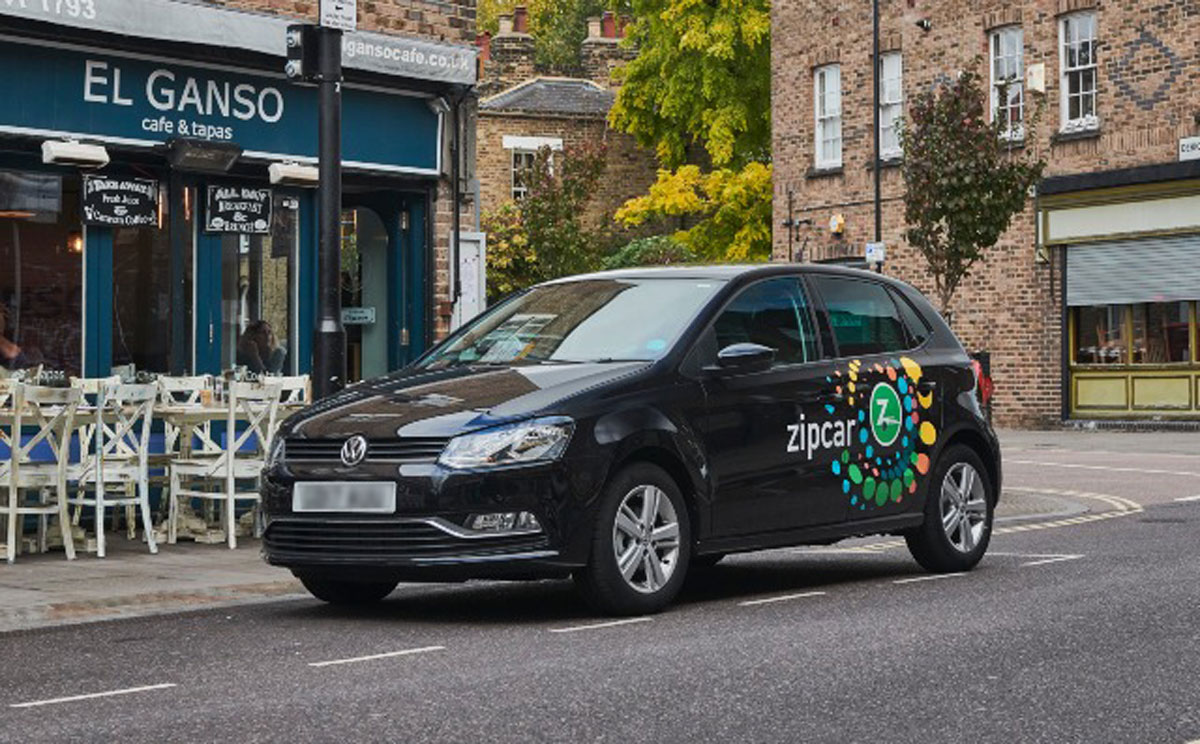
In the circular economy, the extended role of design becomes increasingly important as it contributes to building a new innovative and circular business model. As IDEO is one of the leading companies that promote design thinking, it presents a design thinking process that can be adopted to ensure that the circular design goals are met during the new product development (NPD). This process includes four stages; Understand, Define, Make and Release.
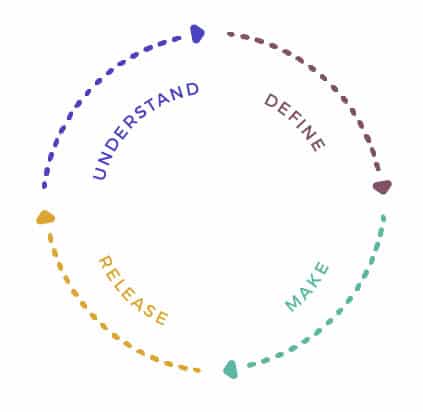
In the video below, the head of BMW design, Domagoj Dukec, described the application of circularity in design visualised in a car design concept made for the IAA in Munich. The design concept is based on the circular economy principles in shifting how we think of product design, such as the reuse of recycled materials and reduction of materials used in the production through the independence of digital led screens for lights and displays in the car exterior as well as interiors. The BMW logo is engraved on the car’s surface to reduce the materials used in the car logo. The video explores the different material choices in building design strategies.
Elements of Circular Design
The circular design model is introduced by the Ellen MacArthur Foundation and the IDEO. The model is presented in a diagram known as the butterfly diagram, which shows that instead of ending the product lifecycle to the landfill, four loops can be used in the following order:
Reuse – in this loop, the product can be reused. For example,, instead of selling washing machines, they could be rented when needed.
Refurbish – The product returned back to the company to restore and sold again after full quality check,, such as refurbished mobile phones.
Remanufacture – The product parts can be detached to be used again in the manufacturing process, such as using the electronic parts in the manufacturing process again.
Recycle – the product is recycled to be used in another industry. For example, high-quality paper can be recycled after use to create cheap paper packs.
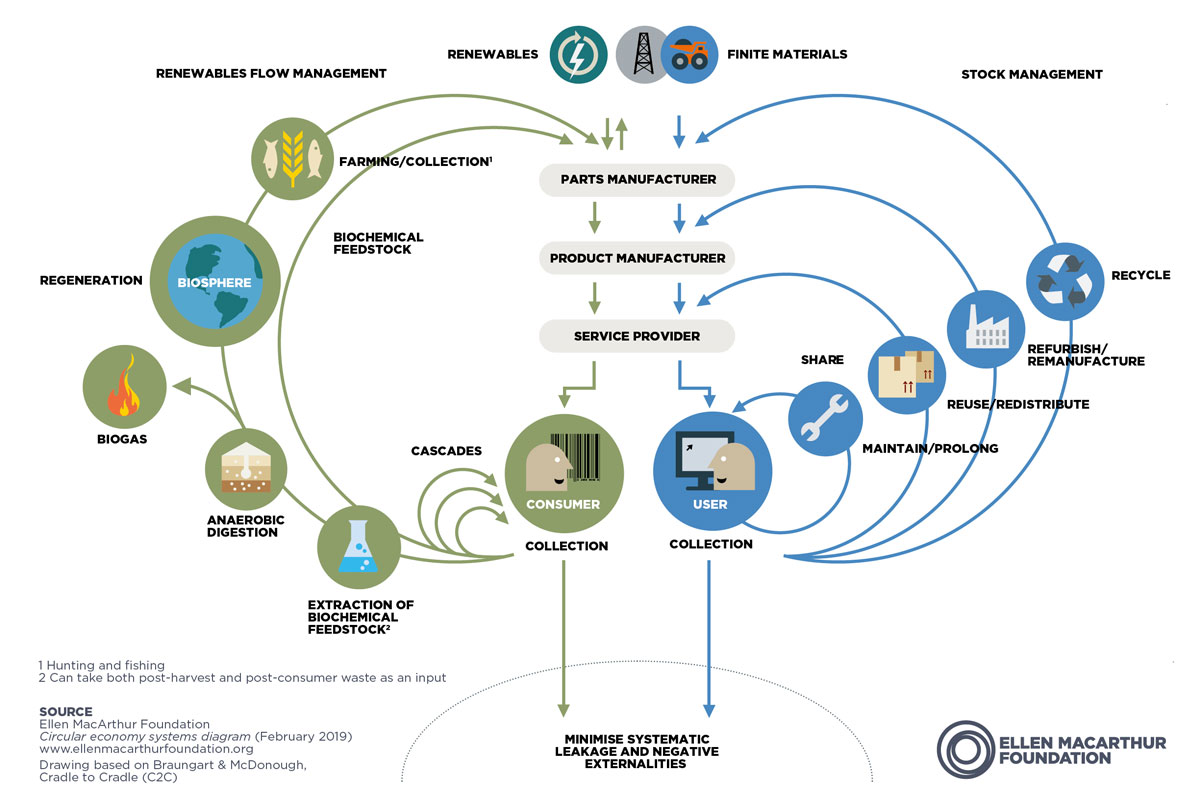
The above four loops can be used to build new circular business models based on the four stages design process highlighted earlier.
Stage 1: Understand
In this stage, the design team and stakeholders, try to understand the different products and why the user needs the product. Then, they try to brainstorm the different solutions that can be adopted to deliver the same service with considering the circular design loops above. Part of the tools that can be used in this process include the following:
- Service Flip is a document that aims to investigate the different products, why the users need them, and how the product offering can be altered to become a service that can be delivered to the consumers without any waste
- The Inside Out aims to investigate the product components and how they can be used after reassembling into their basic components
- The Digital System lets the design team learn from the software industry to build agile, evolved and scalable products
- learn from Nature aims to learn how the nature around us handles its elements, including the biological waste
Stage 2: Define
At this stage, the business goal is defined,, and the multidisciplinary team is formed. In this stage, the team star to form the Business Model Canvas that provides a plan for the production process and creates the brand promise for the product.
Stage 3: Make
At this stage, the team starts to create a user-centred research to understand how the final product will look like, brainstorm the product idea and how it reflects the business model defined in the previous stage. Also, this stage involves creating the product prototype and defining the materials that will be implemented in the production.
Stage 4: Release
The product is launched to the market in order to learn the consumer experience through a Consumer Journey Map and other tools to get the consumer feedback about the product. Also, at this stage, the last elements of the business model are completed, such as building partnerships. For complete toolkit and template documents that can be used in the circular design, you can visit the IDEO Circular Design Guide.
The video below from the Design Council shows the discussion with Mark Buckley, MacArthur Foundation, about how to apply circular design principles.
Case Study: Local Roots
Local Roots is a start-up that reuses the shipping containers to build farms anywhere reducing the food supply chain costs by building farms in different places. Giving the consumers to grow food 365 days a year with 97% less water without any usage of pesticides or herbicides. Each 40-foot container can be modified for 5 acres of indoor agriculture. Below is a video introduction to the Local Roots project:
Further readings
The ties between design and the economy are now stronger than before. While our natural resources are dramatically shrinking, the circular economy can give hand help to the next generation by building sustainable innovative business models that aim to reduce the landfills through reusing, refurbishing, remanufacturing and recycling products. This new business model can only be achieved through a design thinking process that aims to build a circular design. A design that considers the wide sustainable perspective in all the product development process,, including the business model, the used materials, and the product destiny after its lifetime is ended.
Summary
The circular design is an approach to applying the circular economy principles (e.g. reuse, refurbish, and recycle) in the design process to achieve positive human and environmental impact. The circular design process involves four stages: understand, define, make, and release.
Reuse – in this loop, the product can be reused. For example,, instead of selling washing machines, they could be rented when needed.
Refurbish – The product returned back to the company to restore and sold again after full quality check,, such as refurbished mobile phones.
Remanufacture – The product parts can be detached to be used again in the manufacturing process, such as using the electronic parts in the manufacturing process again.
Recycle – the product is recycled to be used in another industry. For example, high-quality paper can be recycled after use to create cheap paper packs.
Stage 1: Understand
In this stage, the design team and stakeholders, try to understand the different products and why the user needs the product.
Stage 2: Define
At this stage, the business goal is defined, and the multidisciplinary team is formed. In this stage, the team star to form the Business Model Canvas that provides a plan for the production process and creates the brand promise for the product.
Stage 3: Make
At this stage, the team starts to create a user-centred research to understand how the final product will look like, brainstorm the product idea and how it reflects the business model defined in the previous stage.
Stage 4: Release
The product is launched to the market in order to learn the consumer experience through a Consumer Journey Map and other tools to get the consumer feedback about the product.

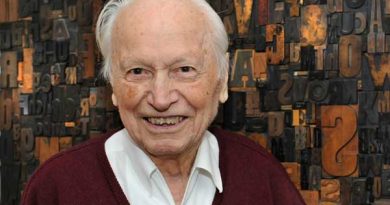
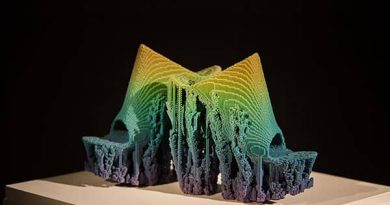
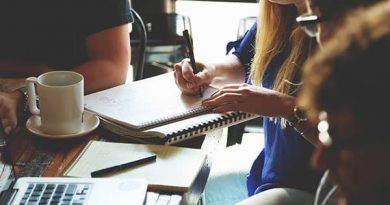
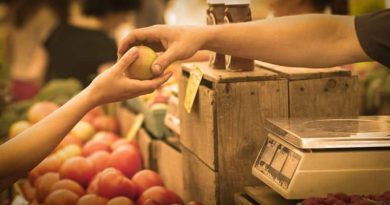
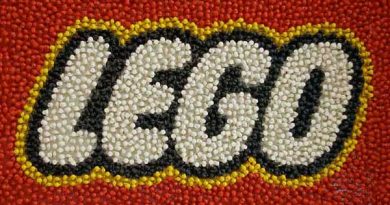
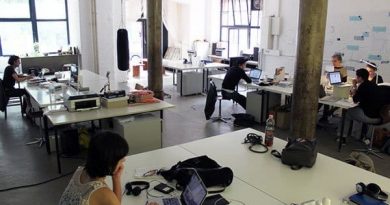
Great article. Thank you very much indeed.
Thanks ya Wael!